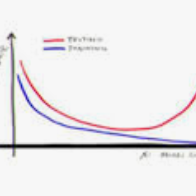Let $(X,\mathcal{E})$ be a hypergraph. A support is a graph $Q$ on $X$ such that for each $E\in\mathcal{E}$, the subgraph of $Q$ induced on the elements in $E$ is connected. We consider the problem of constructing a support for hypergraphs defined by connected subgraphs of a host graph. For a graph $G=(V,E)$, let $\mathcal{H}$ be a set of connected subgraphs of $G$. Let the vertices of $G$ be partitioned into two sets the \emph{terminals} $\mathbf{b}(V)$ and the \emph{non-terminals} $\mathbf{r}(V)$. We define a hypergraph on $\mathbf{b}(V)$, where each $H\in\mathcal{H}$ defines a hyperedge consisting of the vertices of $\mathbf{b}(V)$ in $H$. We also consider the problem of constructing a support for the \emph{dual hypergraph} - a hypergraph on $\mathcal{H}$ where each $v\in \mathbf{b}(V)$ defines a hyperedge consisting of the subgraphs in $\mathcal{H}$ containing $v$. In fact, we construct supports for a common generalization of the primal and dual settings called the \emph{intersection hypergraph}. As our main result, we show that if the host graph $G$ has bounded genus and the subgraphs in $\mathcal{H}$ satisfy a condition of being \emph{cross-free}, then there exists a support that also has bounded genus. Our results are a generalization of the results of Raman and Ray (Rajiv Raman, Saurabh Ray: Constructing Planar Support for Non-Piercing Regions. Discret. Comput. Geom. 64(3): 1098-1122 (2020)). Our techniques imply a unified analysis for packing and covering problems for hypergraphs defined on surfaces of bounded genus. We also describe applications of our results for hypergraph colorings.
翻译:暂无翻译



